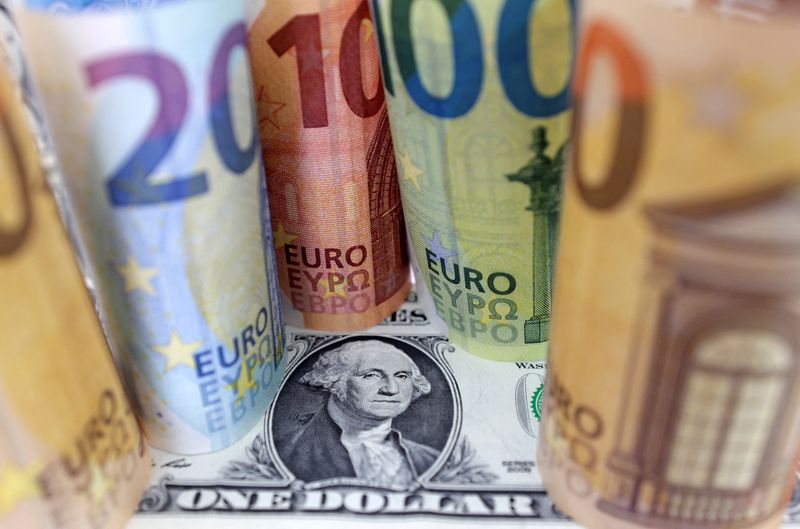
By Harry Robertson
LONDON (Reuters) – Gauges of anticipated volatility in currencies jumped on Wednesday as buyers braced for the U.S. presidential election, which might end in huge adjustments to financial coverage and swings within the greenback.
Single-week implied volatility within the euro-dollar foreign money pair surged to its highest stage since March 2023, when the U.S. was coping with a mini-banking disaster, LSEG knowledge confirmed. It was set for its largest one-day rise since 2017.
Implied single-week sterling-dollar volatility additionally hit its highest since March. The measures are derived from the costs of choices, which buyers use to hedge in opposition to – and wager on – strikes within the underlying currencies.
One-week choices contracts now cowl the day after the election on Nov. 5, during which Republican former president Donald Trump and Democratic Vice President Kamala Harris are neck and neck in polls.
Buyers in current weeks have taken their cues from betting markets, nonetheless, which have proven elevated possibilities of a Trump victory that might result in increased tariffs and monetary deficits, each doubtlessly pushing up U.S rates of interest and boosting the greenback.
“The binary nature of subsequent week’s contest implies vital FX strikes after the occasion,” Barclays strategists, led by Marek Raczko, stated in a analysis observe.
“The market expects the majority of the FX response to materialise within the week across the election. This may be justified by two issues: first, the consequence may nonetheless be unsure on the day after the election, and second, the Fed (U.S. Federal Reserve) is scheduled to satisfy this similar week.”

The rose to a three-month excessive of 104.63 on Tuesday, pushed partly by current sturdy U.S knowledge and partly by buyers’ rising expectations of a Trump victory.
Previous U.S. elections have elicited an excellent larger response within the run-up to the occasion. The week earlier than the 2016 election, which Trump gained, one-week euro implied volatility hit practically 14%, whereas one-week sterling implied volatility topped 13%.